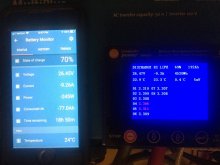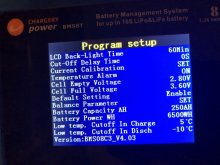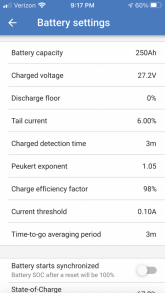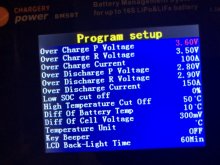Solarfun4jim
Solar seduced :-)
@Chargeryyes, differenct cell manufacture has different storage requirments, because the cell self discharge rate is different. every 3 months, battery pack discharge to 0 and charge to 100% can resume battery original capacity, discharge to 20% and charge to 80% is not the best, but it workable. when charge in 100AH, battery cannot discharge out 100Ah, why? with the cycels increase, when in 100AH, only out 90AH, because the battery meterial microstruture is damaged.
so undertand battery, using battery according to battery datasheet is very important. storage for 3 months, and do a charge-discharge deeply cycel is suggested.
almost good battery or A grade battery manufatured by famous manufactures don't sell in DIY market. the good cell must have almost same volage, same resistance and same capacity before assembel battery bank , fit with good BMS to monitor each cell volage, current, cycles, and other kinds of protecion design, all parameters is preset before delivery, warranty 2000 cycles or 3 years, not only focus on each part performance but also optimize total system performance. these battery banks are used on 5G communication base station at a large volume in China.
Chargey will be ready to provide our customer in DIY market the A grade battery bank in future.
The following picture is the 48V 100AH 16S LiFePO4 battery bank.
Thanks for that info Jason. You are the first person i have read, saying that you must do a 100% charge or a 0% discharge to maintain capacity. I have EVE 280ah commodity cells, which are not 'matched' from manufacturer, but have been top balanced by myself. If i push the cells into the knees, then i will have divergence problems between cells and potential drift. I'm glad you at suggested that my solution of 20-80% is at least workable.
Do you have any links to charts which show the degradation of capacity, when using less than the 100% ? Everything i had seen up till now, shows that using less capacity enhances the number of cycles....so that is what i was aiming for. I was hoping for approx 5000 cycles at 50% capacity useage?
I just wish to express my thanks, that whilst running your business, you take the time out to respond to enquiries on a forum. Your units might not be perfect for every application, no single item ever is, but your responsiveness is second to none.







